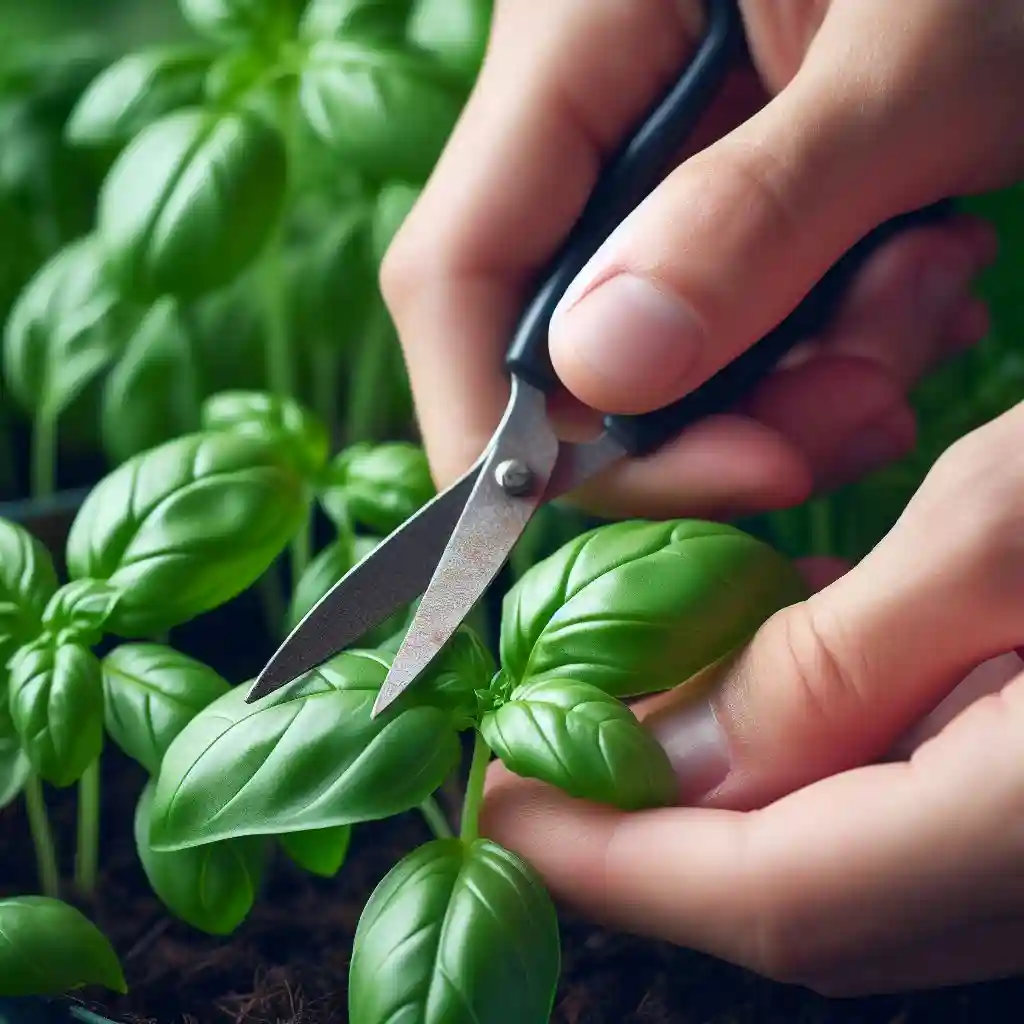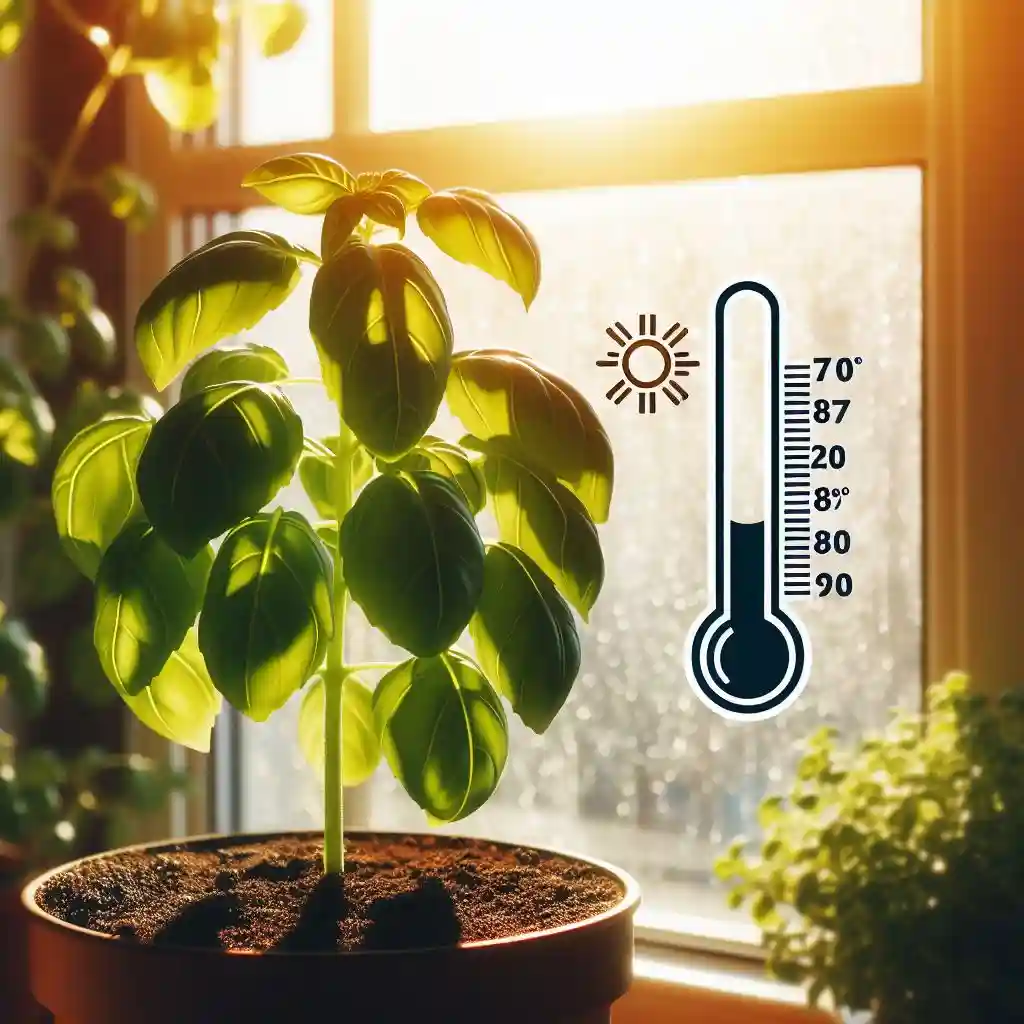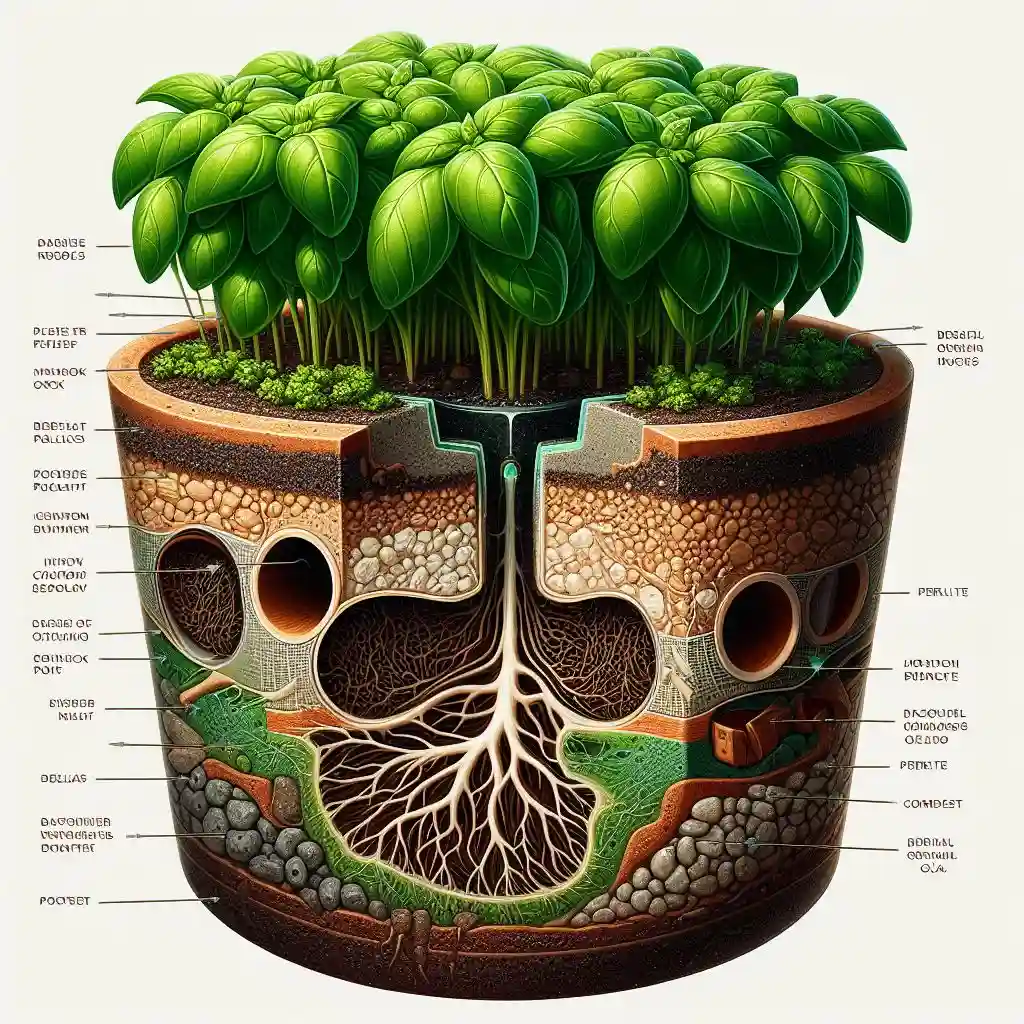How to Keep Your Basil Plant Bushy
To keep your basil plant bushy, follow these tips:
Pinch off the tips of the stems: This encourages the plant to grow bushier and prevents it from becoming leggy.
Provide plenty of sunlight: Basil needs at least 6 hours of sunlight per day to thrive.
Water regularly: Keep the soil moist but not soggy.
Fertilize monthly: Use a balanced fertilizer to help the plant grow healthy and strong.
From Lanky Longshot to Leafy Paradise: How to Keep Your Basil Plant Bushy!
Ever gaze longingly at overflowing basil pots on Pinterest, only to be met with a spindly specimen on your windowsill? You’re not alone! Keeping basil bushy can feel like a botanical battle, but fret no more! This guide unlocks the secrets to cultivating a verdant, leaf-laden paradise right from your kitchen counter.
Why chase after bushiness, you ask? Well, the benefits are bountiful! A bushy basil plant means:
- More delicious leaves: More branches equals more leaves, translating to a larger harvest for your pesto dreams!
- Enhanced flavor: Studies have shown that bushier basil plants produce leaves with richer, more intense flavor due to increased sunlight exposure on various branches.
- Aesthetic appeal: Let’s face it, a bushy basil plant is simply gorgeous! Lush foliage adds life and vibrancy to any kitchen.
Ready to transform your basil from lanky longshot to leafy superstar? Buckle up, plant parent, because we’re diving deep into the secrets of how to keep your basil plant bushy! We’ll explore expert pruning techniques, watering wisdom, sunlight strategies, and soil secrets – all wrapped in a friendly, informative package. So, grab your shears, gather your curiosity, and let’s cultivate a basil bonanza together!
Pruning for Perfection: Unveiling the Magic Behind a Bushy Basil
Remember that spindly basil plant from the introduction? Well, the key to transforming it into a bushy wonder lies in pruning, the horticultural equivalent of a haircut. But unlike your locks, there’s a method to the madness when it comes to keeping your basil plant bushy.

Why Does Pruning Matter?
Think of your basil plant as a miniature tree. When left unpruned, it puts all its energy into growing one main stem, leading to that lanky look. Pruning, however, encourages branching, which is where the bushiness magic happens. By strategically snipping away specific parts, you signal to the plant to “grow outwards, not upwards!” This results in multiple branches, each producing more leaves, ultimately leading to a fuller, bushier basil.
When to Snip and What to Clip:
Now, timing is everything. Wait until your basil reaches 6-8 inches tall before you unleash your inner topiary artist. Look for the leaf axils, those tiny spots where leaves meet the stem. That’s your target zone! Using sharp shears or pruners (sanitized, of course!), pinch off the topmost growing tip, just above a leaf axil. This tells the plant to sprout two new branches from that spot, doubling your leaf-growing potential!
Keep Snipping, Keep Thriving:
Don’t get scissor-happy and prune everything at once. Remember, slow and steady wins the bushy race. As your new branches grow, repeat the pinching process at their tips, encouraging further branching and leaf production. This regular pruning not only promotes bushiness but also keeps your basil healthy and compact.
Remember, how you keep your basil plant bushy involves strategic pruning, not drastic haircuts. By understanding the “why” and “how” behind this technique, you’ll be well on your way to harvesting a beautiful, bountiful bounty of basil leaves!
Sunlight Symphony: Illuminating the Path to a Bushy Basil Bonanza
Sunlight plays a starring role in the basil bushiness drama. Just like we crave sunshine for energy, your basil plant flourishes under the right light conditions. But don’t be fooled by its tropical origins – direct sun exposure can be harsh on this Mediterranean herb. Instead, think of it as a sun-loving diva who prefers the soft spotlight, not the scorching midday glare.

Striking the Perfect Balance:
Aim for 6-8 hours of bright, indirect sunlight daily. A south-facing window with sheer curtains or filtered morning light through an east-facing window are ideal spots. If direct sun is unavoidable, consider moving your plant in the afternoon or using shade cloth to diffuse the intensity.
Signs of Sun Stress:
Remember, too much or too little sun can hinder how to keep your basil plant bushy. Look out for these telltale signs:
- Leggy growth: Stretched stems reaching for light indicate insufficient sun.
- Pale leaves: Lack of sunlight reduces chlorophyll production, leading to paler leaves.
- Sunburn: Brown or yellow patches on leaves signal excessive direct sun exposure.
Maximizing Sunlight Potential:
Here are some tips to optimize your basil’s sunbathing experience:
- Rotate your pot regularly: Ensure all sides receive even light exposure.
- Consider grow lights: If natural light is limited, supplement with LED grow lights during shorter winter days.
- Mirror magic: Strategically placed mirrors can reflect additional sunlight onto your plant.
Remember, sunlight is a key ingredient in the recipe for a bushy basil plant. By providing the right amount and quality of light, you’ll nurture a thriving, leafy paradise on your windowsill!
Soil Secrets: Nurturing the Foundation for a Bushy Basil Bonanza
Just like a strong foundation is key to a magnificent building, the right soil provides the platform for keeping your basil plant bushy. Forget about the dusty bag from your garden shed – your basil craves a specific soil recipe for optimal growth.

The Right Recipe for Success:
Think well-draining, fertile, and loose: these are the magic words when it comes to basil soil. Opt for a commercial potting mix specifically designed for herbs or vegetables. These mixes often contain a blend of peat moss, perlite, and compost, ensuring good drainage and aeration, crucial for preventing root rot.
Drainage: The Unsung Hero:
Remember, basil roots are water lovers, but not waterlogged victims. That’s why drainage is essential. Your pot should have drainage holes, and the soil shouldn’t become soggy after watering. If drainage seems insufficient, consider adding extra perlite or gravel to the mix.
Feeding Your Bushy Dream:
While basil doesn’t need frequent feeding, a light boost during the growing season can work wonders. Opt for a diluted organic fertilizer formulated for herbs or vegetables. Follow the package instructions carefully to avoid overfertilizing, which can harm your plant.
Signs of Soil Stress:
Just like humans, basil shows signs when its soil isn’t ideal for keeping it bushy:
- Yellowing leaves: This can indicate nutrient deficiencies or overwatering.
- Wilting: Both underwatering and soggy soil can cause wilting.
- Stunted growth: Poor drainage or lack of nutrients can hinder growth.
Remember, the foundation for a bushy basil plant starts with the right soil. Choose a well-draining, fertile mix, ensure proper drainage, and provide occasional nourishment, and you’ll be well on your way to cultivating a leafy masterpiece!
Bonus Tips for a Bushy Basil Bonanza: Unlocking Hidden Secrets!
By now, you’ve mastered the essentials of how to keep your basil plant bushy – pruning, sunlight, soil, and watering. But what about those extra sprinkles of magic that can truly elevate your basil game? Here are some bonus tips to transform your plant into a bushy, leafy superstar:
Pest Patrol:
Basil, while generally resistant, can attract unwanted guests like aphids or whiteflies. For organic solutions, try spraying with neem oil or insecticidal soap. Encourage beneficial insects like ladybugs by planting companion herbs like marigolds or nasturtiums.
Harvesting for Happiness:
Regular harvesting is not only rewarding, but also promotes bushiness. Whenever you pick leaves, snip them just above a leaf axil. This will encourage the plant to produce new branches from that spot, increasing leaf production and maintaining a compact shape.
Repotting Right:
As your basil thrives, it might outgrow its pot. Repot to a slightly larger container with fresh potting mix to ensure proper drainage and root space for continued growth. Choose the right timing – ideally, repot in spring or early summer when the plant is actively growing.
Temperature Tantrums:
Basil prefers warm temperatures (around 70-80°F) and doesn’t appreciate sudden chills. Avoid placing it near drafty windows or air conditioners. Remember, happy temperature equals happy (and bushy) basil!
Let the Leaves Speak:
Your basil plant is a silent communicator. Pay attention to changes in leaf color, texture, or growth patterns. These can be early signs of pests, diseases, or nutrient deficiencies. By addressing these issues promptly, you can keep your plant healthy and bushy.
Beyond the Basics:
For the truly enthusiastic plant parent, consider experimenting with techniques like pinching flower buds (to prevent flowering and redirect energy to leaf production) or using foliar feeding (diluted fertilizer sprayed on leaves). However, start with the basics and master them before venturing into these advanced techniques.
Remember, keeping your basil plant bushy is a journey, not a destination. By incorporating these bonus tips and providing consistent care, you’ll witness your basil transform into a verdant, leafy paradise, rewarding you with delicious harvests and vibrant greenery all season long!
Conclusion: Cultivating a Leafy Legacy: Your Bushy Basil Bonanza Awaits!
Congratulations, plant parent! You’ve embarked on the rewarding journey of keeping your basil plant bushy. By now, you’re armed with a treasure trove of knowledge – from pruning secrets to sunlight strategies, soil solutions to bonus tips. Remember, this isn’t just about aesthetics; a bushy basil plant translates to abundant harvests, intense flavor, and the satisfaction of nurturing a thriving life.
Here’s a quick recap of your key takeaways for keeping your basil bushy:
- Embrace the power of pruning: Regular pinching encourages branching, leading to more leaves and a bushier shape.
- Bathe your basil in the right light: Aim for 6-8 hours of bright, indirect sunlight daily.
- Provide a well-draining, fertile foundation: Opt for a commercial potting mix specifically designed for herbs or vegetables.
- Water wisely: Keep the soil consistently moist, but avoid overwatering.
- Harvest for continued growth: Regular harvesting promotes bushier plants and rewards you with delicious basil!
- Address potential issues promptly: Be observant of pests, diseases, or nutrient deficiencies and take action as needed.
Remember, this guide is just the beginning. As you embark on your basil-growing adventure, experiment, observe, and don’t be afraid to ask questions. Every leaf you nurture, every snip you make, contributes to cultivating a bushy basil bonanza that will be the envy of all your green-thumbed friends.
So, grab your shears, bask in the sunshine, and witness the magic unfold! Let your bushy basil plant be a testament to your dedication and a source of endless culinary inspiration. Happy growing!
People Also Ask: Demystifying Basil Bushiness Secrets!
Q: Can my basil plant flower?
Yes, basil can flower, producing small white blooms. While pretty, flowering signals the end of the leaf-growing phase. If bushiness is your goal, pinch off flower buds as they appear. This redirects energy back to leaf production, keeping your basil lush and leafy.
Q: What can I do with leftover basil stems?
Don’t discard those snipped stems! They’re packed with flavor. Add them to your next pot of soup or broth for an extra basil boost. Infuse them in vinegar for a delicious homemade condiment. Or, root them in water to propagate new basil plants and share the bushy love!
Q: My basil leaves have holes, is it sick?
Small holes might be caused by harmless chewing insects. Try organic solutions like neem oil spray or releasing ladybugs for natural pest control. Larger holes could indicate caterpillars. Hand-pick them or use an insecticidal soap spray if necessary.
Q: How often should I water my basil plant?
The golden rule: don’t overwater! Aim for consistent moisture, not soggy soil. Check the soil daily by sticking your fingertip in about an inch deep. Water when it feels dry to the touch. Remember, overwatering is a major enemy of a bushy basil plant.
Q: Can I use store-bought basil for propagation?
While possible, store-bought basil often doesn’t root well. For optimal bushiness, consider starting from seeds or cuttings from a healthy basil plant.
